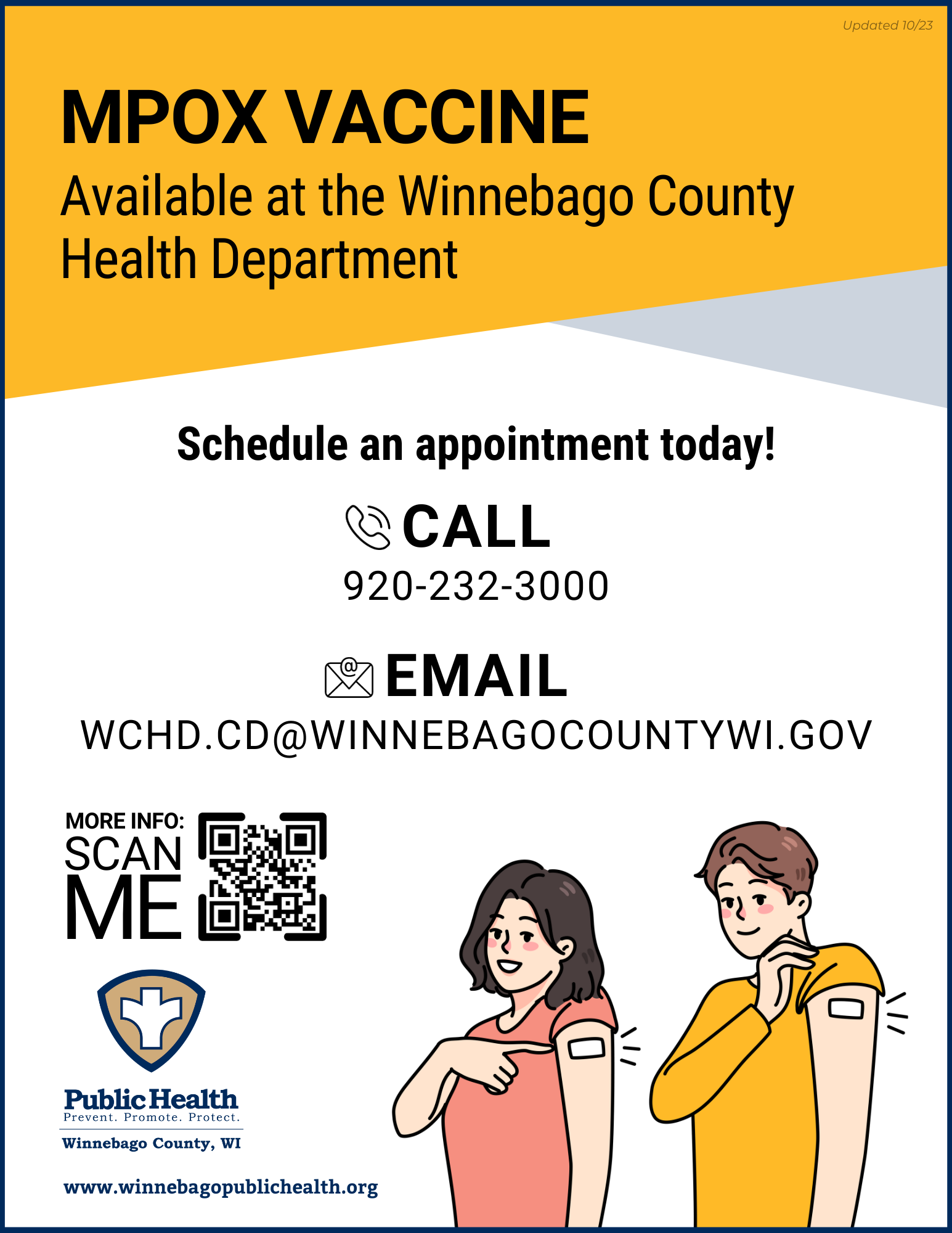 Mpox (formerly known as monkeypox) is caused by a virus that is related to the virus that causes smallpox. JYNNEOS is a 2-dose vaccine developed to protect against mpox and smallpox infections. People need to get both doses of the vaccine for the best protection against mpox. The second dose should be given 4 weeks after the first dose.
Mpox (formerly known as monkeypox) is caused by a virus that is related to the virus that causes smallpox. JYNNEOS is a 2-dose vaccine developed to protect against mpox and smallpox infections. People need to get both doses of the vaccine for the best protection against mpox. The second dose should be given 4 weeks after the first dose.
Vaccination is an important tool in stopping the spread of mpox. People who are vaccinated should continue to avoid close, skin-to-skin contact with someone who has mpox.
CDC recommends vaccination against mpox if:
- You had known or suspected exposure to someone with mpox
- You had a sex partner in the past 2 weeks who was diagnosed with mpox
- You are a gay, bisexual, or other man who has sex with men or a transgender, nonbinary, or gender-diverse person who in the past 6 months has had any of the following:
- A new diagnosis of one or more sexually transmitted diseases (e.g., chlamydia, gonorrhea, or syphilis)
- More than one sex partner
- You have had any of the following in the past 6 months:
- Sex at a commercial sex venue (like a sex club or bathhouse)
- Sex related to a large commercial event or in a geographic area (city or county for example) where mpox virus transmission is occurring
- Sex in exchange for money or other items
- You have a sex partner with any of the above risks
- You anticipate experiencing any of the above scenarios
- You have HIV or other causes of immune suppression and have had recent or anticipate future risk of mpox exposure from any of the above scenarios
- You work in settings where you may be exposed to mpox:
- You work with orthopoxviruses in a laboratory
- You should NOT get the vaccine if:
- You had a severe allergic reaction (such as anaphylaxis) after getting your first dose of the JYNNEOS vaccine.
You should take extra caution if:
You had an allergic reaction to any vaccine. You may still be vaccinated with JYNNEOS, but your provider may need to observe you for 30 minutes after you get vaccinated to make sure you don’t develop an allergic reaction.
Talk to your healthcare provider if you had an allergic reaction to the antibiotics gentamicin or ciprofloxacin, or chicken or egg protein.
How the vaccine is given
Although early findings suggest that the first dose of JYNNEOS vaccine gives some protection against mpox, two doses are recommended to provide stronger protection. The second dose should be given 4 weeks (28 days) after the first dose. If you can’t get your second dose on time, you should get it as soon as possible to complete the series.
Side effects
Not everyone has side effects, but some people do. The most common side effects after JYNNEOS vaccination are pain, redness, and itching at the spot where the vaccine is given. You might also experience fever, headache, tiredness, nausea, chills, and muscle aches. These are signs that your immune system is responding, not that you’re getting sick.
How long it takes for the vaccine to work
You can start to have an immune response after the first dose of JYNNEOS, but it takes two weeks after the second dose to be the most protected.
It’s not known how long protection might last, or if protection might decrease over time. CDC is analyzing the current data and conducting studies to enhance the knowledge on how well the JYNNEOS vaccine works during the current mpox outbreak, as well as how long protection might last. These studies will be used to make future vaccine recommendations.
Where you can get vaccinated
- Contact your primary care provider.
- Winnebago County Public Health is currently offering the JYNNEOS vaccine by appointment. To make an appointment or see if you qualify, please contact Public Health at 920-232-3000 or email wchd.cd@winnebagocountywi.gov.
- Use the CDC mpox vaccine locater to find a site near you: www.cdc.gov/poxvirus/mpox/vaccines/vaccine-recommendations.html
Vaccine cost
Mpox vaccines are free. Providers must give you the vaccine regardless of your ability to pay the administration fee.
The providers may bill a program or plan that covers the mpox vaccine administration fee (like your private insurance or Medicare/Medicaid).
Additional Resources:
- CDC - Mpox
- Wisconsin Department of Health Services (DHS) - Mpox
- Click to download and share our vaccine flyer:
English PDF | Spanish PDF


